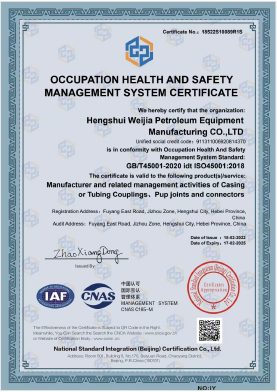- Afrikaans
- Albanian
- Amharic
- Arabic
- Armenian
- Azerbaijani
- Basque
- Belarusian
- Bengali
- Bosnian
- Bulgarian
- Catalan
- Cebuano
- Corsican
- Croatian
- Czech
- Danish
- Dutch
- English
- Esperanto
- Estonian
- Finnish
- French
- Frisian
- Galician
- Georgian
- German
- Greek
- Gujarati
- Haitian Creole
- hausa
- hawaiian
- Hebrew
- Hindi
- Miao
- Hungarian
- Icelandic
- igbo
- Indonesian
- irish
- Italian
- Japanese
- Javanese
- Kannada
- kazakh
- Khmer
- Rwandese
- Korean
- Kurdish
- Kyrgyz
- Lao
- Latin
- Latvian
- Lithuanian
- Luxembourgish
- Macedonian
- Malgashi
- Malay
- Malayalam
- Maltese
- Maori
- Marathi
- Mongolian
- Myanmar
- Nepali
- Norwegian
- Norwegian
- Occitan
- Pashto
- Persian
- Polish
- Portuguese
- Punjabi
- Romanian
- Russian
- Samoan
- Scottish Gaelic
- Serbian
- Sesotho
- Shona
- Sindhi
- Sinhala
- Slovak
- Slovenian
- Somali
- Spanish
- Sundanese
- Swahili
- Swedish
- Tagalog
- Tajik
- Tamil
- Tatar
- Telugu
- Thai
- Turkish
- Turkmen
- Ukrainian
- Urdu
- Uighur
- Uzbek
- Vietnamese
- Welsh
- Bantu
- Yiddish
- Yoruba
- Zulu
Understanding API Tubing and Casing Specifications for Oil and Gas Industry
Understanding API Tubing and Casing Charts
In the oil and gas industry, the terminology surrounding drilling and production can be complex. Among the crucial components in this field are two key elements tubing and casing. The American Petroleum Institute (API) has established standardized specifications, which include charts for tubing and casing dimensions, used widely in drilling operations. Understanding these charts is essential for professionals in the industry, as they impact the efficiency and safety of oil and gas extraction processes.
What are Tubing and Casing?
Before delving into the specifics of the API charts, it's essential to define tubing and casing. Casing is the pipe that is installed in a drilled well to prevent the well walls from collapsing and to isolate different underground layers. It protects the integrity of the wellbore and ensures that drilling fluids do not leak into the surrounding environment. Tubing, on the other hand, is a smaller diameter pipe that is installed within the casing through which the produced oil or gas flows to the surface.
API Specifications
The API provides a standardized set of specifications that delineate the dimensions, weight, materials, and performance standards for both tubing and casing. These specifications are essential for manufacturers and operators to ensure compatibility and reliability across different regions and projects. The API standards offer a systematic approach for professionals to select appropriate materials based on various factors, such as formation pressure, temperature, and the type of fluids being extracted.
Understanding the Tubing and Casing Charts
The API tubing and casing charts present critical information in a structured format
. The charts typically include the following detailsapi tubing and casing chart

1. Nominal Pipe Size This refers to the diameter of the pipe. It is crucial as it must be compatible with existing infrastructure and must accommodate the expected flow rates of oil or gas.
2. Wall Thickness The chart specifies various wall thickness options, which directly affect the pipe's strength and ability to withstand the pressures encountered during drilling operations.
3. Weight Casing and tubing weight per unit length is provided, which is essential for evaluating the load on drilling equipment and facilities. This information helps in ensuring the structural integrity of the well and equipment.
4. Grade Different grades of materials are specified in the API charts, indicating the tensile strength and corrosion resistance of the tubing or casing. This is crucial when dealing with harsh environmental conditions and aggressive fluids.
5. Burst and Collapse Pressures API charts also provide details on the operational limits of tubing and casing, including maximum burst and collapse pressure ratings, ensuring safety and reliability during operation.
Importance of Using API Charts
Utilizing API tubing and casing charts not only helps in selecting the right equipment for specific drilling conditions but also facilitates compliance with regulatory frameworks in various regions. By adhering to API standards, companies can enhance safety and reduce the risk of well failures, which can have severe economic and environmental consequences.
In conclusion, the API tubing and casing charts are indispensable tools for professionals involved in the oil and gas industry. By providing standardized data on dimensions, materials, and pressure ratings, these charts ensure that the tubing and casing selected for drilling projects meet the required safety and performance standards. As the industry continues to evolve, staying informed about these specifications will be crucial for the successful and sustainable extraction of natural resources.
-
Well Casing Extension Couplings – Applications and InstallationNewsJun.06,2025
-
Types of Crossover Subs in Drilling & CompletionNewsJun.06,2025
-
Key Features of High-Quality Tubing Pup JointsNewsJun.06,2025
-
Installation and Maintenance Tips for Steel Couplings for PipeNewsJun.06,2025
-
How to Select the Right Pup Joint for Oil & Gas OperationsNewsJun.06,2025
-
Applications of Stainless Steel Pipe CouplingsNewsJun.06,2025







